Discover The Art Angle
The Art Angle

The Art Angle
Author: Artnet News
Subscribed: 898Played: 30,781Subscribe
Share
2019 ©
Description
A weekly podcast that brings the biggest stories in the art world down to earth. Go inside the newsroom of the art industry's most-read media outlet, Artnet News, for an in-depth view of what matters most in museums, the market, and much more.
329 Episodes
Reverse
Manga is surely one of the most beloved and influential types of culture in the world. And while there’s long been a thriving international fandom around Japanese graphic novels, in the last 5 years in particular, there’s been a huge surge of popular interest, with manga impossible to miss in book shops and comic stores—and now in museums too.
The big exhibition “Art of Manga” at the De Young Museum in San Francisco is proving to be a real event. As the title suggests, the show looks at manga not just as a cultural phenomenon but as visual art, digging into the history of the medium and celebrating its dynamic graphic and storytelling style.
Specifically, “Art of Manga” focuses on 10 Japanese creators, selected to show the breadth of what manga has meant, and can be. They are: Akatsuka Fujio, Araki Hirohiko, Chiba Tetsuya, Oda Eiichiro, Tagame Gengoroh, Takahashi Rumiko, Taniguchi Jiro, Yamashita Kazumi, Yamazaki Mari, Tanaami Keiichi, and Yoshinaga Fumi.
What is the connection of manga to Japanese art history? What does a museum have to add to the story of manga? And what can the popularity of manga, in turn, teach museums? The show’s curator, Nicole Coolidge Rousmaniere, agreed to talk to us about all of this.
Art World Infamy is a special series from the team behind The Art Angle, investigating the scandals and schemes that have rocked the art world. In the first chapter, told over four episodes, senior market reporter Eileen Kinsella unravels the rise and fall of dealer Inigo Philbrick.
After a bombshell $13 million lawsuit from angry collectors, Inigo Philbrick vanished. What followed was a cascade of international claims from clients who had entrusted him with millions, drawn in by his supposed Midas touch in the art market.
From art fairs to gallery openings to gala dinners, the question on everyone’s lips was the same: Where’s Inigo?
In this third episode, we examine the fallout from Philbrick’s fraudulent deals, and the frenzy that erupted in the art world after his sudden disappearance.
Museums across the globe are facing unprecedented challenges. In the West, public funding is shrinking, politics is creeping into the galleries, and institutions are asking hard questions about how to stay relevant to their donors and their publics. In an era of increasing scrutiny and diminishing returns, even the most established museums are questioning what long-term sustainability means.
Meanwhile in China, the private museum boom that once symbolized cultural ambition and real-estate wealth is cracking, and some of these lavish new museums are having to close or scale back.
In short, museums are in crisis.
Senior editor Kate Brown recently worked with Margaret Carrigan, our news editor and host of the Art Market Minute, to edit a four-part series examining this issue from different angles.
Margaret joins her on the podcast to talk about the takeaways and the financial, political, and ethical pressures reshaping museums. We also discuss whether this breaking point could be the start of a new era of reinvention.
Art World Infamy is a special series from the team behind The Art Angle, investigating the scandals and schemes that have rocked the art world. In the first chapter, told over four episodes, senior market reporter Eileen Kinsella unravels the rise and fall of dealer Inigo Philbrick.
Long before headlines exposed his $86 million fraud, Inigo Philbrick was just another ambitious intern at one of the most powerful galleries in the world.
Then a student at Goldsmiths College, Philbrick caught the attention of legendary dealer Jay Jopling and landed a coveted internship at White Cube—the gallery that defined 1990s London, and launched the YBAs (Young British Artists) including Damien Hirst and Tracey Emin.
In this second episode, we explore how Philbrick so quickly ingratiated himself into the upper echelons of the art world that, within just a few years, he was running his own eponymous gallery. With hindsight, were there early warning signs of what was to come that the art world failed to see?
Art World Infamy is a special series from the team behind The Art Angle, investigating the scandals and schemes that have rocked the art world. In the first chapter, told over four episodes, senior market reporter Eileen Kinsella unravels the rise and fall of dealer Inigo Philbrick.
What happens when you mix staggering sums of money with opaque financial deals in the high-stakes world of art?
Welcome to Art World Infamy, a new podcast mini-series about the scandals and larger-than-life figures that have gained industry notoriety. We begin with a four-part investigation into how Inigo Philbrick climbed to the top of the art world—and how it all unraveled.
Once hailed as a wunderkind dealer, Philbrick leveraged personal connections and the soaring contemporary art market to build what looked like an unstoppable career. But his fortunes hinged on deception, and once uncovered, the losses were staggering.
In this opening episode, we’ll trace the convoluted deals that propelled Philbrick to the top, and would eventually lead to a spectacular collapse that left collectors and investors out of tens of millions of dollars.
It’s September, and the art world is back to business. In this month’s episode of the Art Angle Round-Up, we’re diving into the stories making headlines from Buenos Aires to New York—and even into the fantastical worlds of Frank Frazetta.
We start with a remarkable development out of Argentina, where a couple has been charged with concealing looted art. Then, we turn to the gallery scene, where art superstar Jeff Koons is once again on the move, returning to Gagosian after ditching Pace. And finally, we celebrate a record-breaking sale in the fantasy art market: Frazetta’s iconic Conan the Barbarian painting Man Ape fetched $13.5 million, more than doubling his previous auction record.
Joining Kate Brown to unpack these stories is co-host Ben Davis, along with returning art market expert Eileen Kinsella.
We’re thrilled to be able to say that the latest edition of Artnet's Intelligence Report: The Mid-Year Report 2025, has been published. It's free for all—head to Artnet News to download it as a handsome PDF.
Within its covers, you'll find a bounty of information on the auction world and the art industry, which artists have been having a great year, how various countries' markets are performing, and a great deal more. Surprises abound from the Old Masters to the ultra-contemporary. You'll also find interviews with power players from the field, like the Guggenheim Museum's chief, Mariët Westermann, and the widely admired, now retired art dealer, Jack Hanley.
And then there is the cover story by our ace columnist, Katya Kazakina. It's titled The Storm Hits the Art Market: Who's Getting Swept Away? It looks at recent upheavals in the art industry with galleries closing left and right, and everyone spent their summer thinking about how to run an art business now. There are tales of crash-outs and heartening new models; there's something for everyone. Artnet Pro editor Andrew Russeth speaks with Katya about her reporting after she pounded the pavement at openings for exhibitions all over New York City.
Fans of the Art Angle know our monthly Art Angle Round-Up, where Kate Brown and Ben Davis are usually joined by a writer to talk about three topics in art. For the early September week of art fairs in New York, we decided to mix it up with an experiment: a live edition of the Art Angle Round-Up, at Independent 20th Century.
Our guest was the curator Matthew Higgs. He’s the director of storied New York alternative art space White Columns; founding curatorial advisor to Independent; and—I’m really not just saying this—someone who's been on my shortlist of people to have on the show for a long time. Higgs is one of the most thoughtful observers of the art scene that you could to have a chat with.
The house was packed for the live Saturday recording. Of course, we know that people listen to the show—but to see people actually turn out and to hear from listeners who have thoughts about it and want to talk about art and toss around ideas was very exciting. So, a big thank you to everyone who joined us in the audience.
And of course thanks Independent 20th Century, and to Matthew for a lively and serious conversation.
Most of us can agree: we are living through a cultural crisis. It doesn’t come from a single source—it isn’t just algorithms, aesthetics, politics, or the economy. It’s the convergence of all these forces, and beneath them, the erosion of institutions that once anchored collective life. Over the past decade, digital platforms, like social media, promised to be a new kind of connective tissue—a democratizing force to replace more slow-moving institutions. But while platforms have transformed our economies and society, they’ve also hollowed out the very structures that once gave us shared ground.
Mike Pepi has long been a sharp voice in this particular debate. Straddling both the tech industry and the worlds of art criticism and cultural theory, he brings a rare perspective. His writing, which has appeared in Frieze, e-flux, Artforum, and The Brooklyn Rail, also takes the form of a compelling new book called Against Platforms: Surviving Digital Utopia that was published earlier this year. In it, Pepi dismantles some of Silicon Valley’s most enduring myths, and it’s a bracing argument about what we have lost and what’s at stake as we hand over so much power, diminishing along the way some of our core institutions. But he also looks at how we might begin to rebuild them. For the art world in particular, the implications of Pepi's ideas are profound.
This is a re-air of a popular episode from earlier in the year.
Have you ever asked yourself: What do artists have to learn from the octopus? Maybe not—but the question is at the heart of the work of Miriam Simun, who currently has an exhibition about her Institute for Transhumanist Cephalopod Evolution at the art space Recess in Brooklyn. And it turns out the answer is mind-expanding. Almost literally.
Simun’s unusual art practice can be seen as part of a serious trend in recent years of artists exploring non-human thought of all kinds in the hopes of shifting our troubled relationship to the natural world. The centerpiece of Simun's show at Recess is a series of workshops titled “How to Become an Octopus (and sometime squid).” For these, the artist guides participants through a two-hour program of “psycho-physical” exercises she has developed over many years through collaborations with marine biologists, engineers, dancers, and synchronized swimmers.
She’s taught the method all over the world, and the description says the classes are “open to anyone curious about cephalopods, new ways of sensing, and expanding the definition of self”—an audience which included national art critic Ben Davis. He got in there to explore my cephalopod side, and for this week's Art Angle, we talk about Simun’s art and what he took away from my experience in her workshop.
If you want to know which artist is having the biggest year in museums, there is one name that springs to mind for me: Cara Romero.
Since her first big breakout a decade ago at Santa Fe Indian Market, Romero has been steadily growing in influence. If you don’t know it yet, her photo-based art is full of color, drama, and detail. It’s sometimes funny, sometimes fantastical. And it moves between a variety of themes that are extremely important in museums right now: Indigenous identities, environmental concern, science fiction, and staged or set-up photography, to name a few.
For that reason, Romero finds her work part of many surveys and touring exhibitions at the moment. She had this year a mid-career retrospective at the Hood Museum at Dartmouth, “Cara Romero: Panûpünüwügai,” meaning “Living Light.” She also has a two-person spotlight with her husband, the artist Diego Romero, called “Tales of Future Past,” currently at the Crocker art Museum in Sacramento.
For someone who has risen to the very top of the museum circuit, Romero has had a unique career path and story.
Join The Art Angle hosts Ben Davis and Kate Brown for a special live edition of The Round-Up with special guest Matthew Higgs at Independent 20th Century Art Fair on Saturday, September 6, at 5 p.m. in New York. Purchase your tickets at Independenthq.com, and learn more about Independent 20th Century’s full programming here.
In art history, the pastoral has long offered a vision of nature as sanctuary—Arcadian meadows, idyllic countrysides, and timeless landscapes painted as if untouched by human conflict or change. It is a mode steeped in longing, often idealizing rural life as a place of harmony, simplicity, and beauty. From the verdant backdrops of Renaissance allegories to the sunlit fields of 19th-century landscape painting, the pastoral tradition has provided generations of artists and their audiences a gentle escape from the turbulence of urban and political life. You can still see these scenes in their full, romantic bloom at institutions like the Met in New York or the Louvre in Paris, where they stand as visions of a perfect, almost mythical world.
Today, however, a different strain of pastoral is taking root—one that resists the urge to smooth over complexity. My sharp-eyed colleague Katie White has spotted a cohort of contemporary artists who are engaging with pastoral imagery in ways that raise the stakes, bringing the countryside into conversation with the crises and contradictions of the present. She’s dubbed this approach the para-pastoral, a genre that does not retreat into a calm and untroubled countryside but instead ventures into ambiguous, layered, and sometimes unsettling terrains.
According to Katie, this new approach reframes the landscape not as a static refuge but as a charged space, marked by ecological urgency, political tension, and social change. Rather than romanticizing, the para-pastoral interrogates: Who has access to land? What histories does it conceal? How do rural spaces fit into the global story of climate and capitalism?
Katie joins senior editor Kate Brown on the podcast to trace the history of pastoral art and explore the tense, resonant present of the para-pastoral. Together, we’ll look at what’s fueling the genre’s resurgence, the social and environmental urgencies shaping it, and how artists are reimagining the natural landscape—not as a refuge from reality, but as a mirror of it.
Episode artwork: Samantha Joy Groff, Backwoods Diana the Huntress (2024). Photograph: Sofia Colvin. Courtesy of the artist.
While we are on summer break, this is a re-air of a popular episode from earlier in the year.
Can you think of a work of art that truly thrilled you? Maybe you can—and if you can, maybe it even literally made you shiver, or sent a chill up your spine.
This is the phenomena that is called “Aesthetic Chills.” It’s tied to strong emotional reactions to music or dramatic moments in fiction, or even to works of visual art. The effect is a bit mysterious, though it’s also associated with some of our most memorable art encounters. What does it mean for an artwork to be literally “spine-tingling?” Why does it happen when it happens, and why is it so rare? Ben Davis wrote a two-art essay last year on this fascinating phenomena.
Ben’s essay argued that this was more than just a technical subject. He thought that it might even point towards some vital parts of what make art important in our lives that don’t get enough attention. Based on the reaction of readers, many seem to agree—we also published an essay of readers responding with their own examples of artworks that had the effect on them.
It may be the dog days of summer, but the art world doesn’t take a break, and there’s plenty to talk about for our monthly roundup episode, where we parse and analyze the biggest headlines shaping the art world and industry. In this episode, we take a look at what is going on in the art scenes across London, New York, and Berlin, including some of the biennials going on this summer. Then, we get into the headlines: including a dive into a long-gestating biopic by actor Johnny Depp, called Modì: Three Days on the Wing of Madness. The new film is Depp's first directorial effort in nearly three decades, and it dramatizes 72 chaotic hours in the artist Amedeo Modigliani’s life as he chases around early 20th-century Paris with artists Chaim Soutine and Maurice Utrillo. We also talk about Depp's new art drop. Is it all a rebranding exercise?
After that, we break down the intrigue swirling around the U.S. pavilion for next year’s Venice Biennale and what it might reveal about American cultural diplomacy in 2025. Within that fold, we take stock of a proposal from controversy-loving artist Andres Serrano and another idea from far-right American blogger Curtis Yarvin. Last but not least, we analyze the Labubu mania, a craze for these mischievous little dolls that has finally made its way into the art world and into the market.
National art critic Ben Davis and our editor-in-chief, Naomi Rea joined senior editor Kate Brown on the podcast to talk about it all.
If you’ve been around art in the last several decades or so, you likely have heard the term “institutional critique.” This is a genre of art that turns the lens back onto the world around the art object as its subject, finding playful or polemical ways to provoke thought on art’s unspoken rules and expectations and links to the wider world.
Andrea Fraser is one of the artists who has most helped define “institutional critique” as a genre and as a practice. She has done this in artworks that sometimes look like performances, or lectures, or works of research—but also in her essays and theoretical writings.
One of her recent essays, “The Field of Contemporary Art: A Diagram,” published over at e-Flux Notes, is an attempt literally to map out how contemporary art is not one thing but a landscape of different competing camps and value systems, so that you might figure out where you stand within it. She calls this theory “a resource to make sense of a field that makes no sense,” and she agreed to talk to art critic Ben Davis about it.
What’s a painting worth? For art world professionals, that question of price has never been easy—but lately, it’s gotten harder than ever.
As we’ve discussed on this podcast before, the art market has cooled off. But this isn’t just a downturn—it’s a disruption. The system that once supported pricing logic is now in disarray, and dealers and advisors are feeling the strain.
In a recent report for Artnet News Pro, our editor-in-chief Naomi Rea explored how the traditional rules of art pricing have stopped making sense. With confidence waning and speculation drying up, dealers are quietly recalibrating. What we’re seeing may be more than a correction—as Naomi reports, it could be the unraveling of an entire logic.
Naomi joins senior editor Kate Brown to unpack what’s going on in the “danger zone” of the market and how different players—from mega-galleries, emerging dealers, to advisors and collectors—are adapting. They also discuss whether we might be heading toward a more sustainable and meaningful art market.
Every rising generation reinvents the rules of how art works. What are the new new ways of working? What kinds of spaces serve those needs? Art critic Ben Davis keeps coming back to these questions, and it’s part of why he decided he wanted to talk to Maya Man.
Man got her MFA from the famous Media Art program at the University of California in 2023. She makes art that’s fun and very online, looking at the digital world and the way it blurs reality and performance. Right now, her work A Realistic Day in My Life Living in New York City is the first-ever work commissioned by the Whitney Museum for its “On the Hour” program, taking over the museum’s website every hour for 30 seconds. Set your clock if you want to catch it.
Man is also a scene-maker herself. Davis first heard about her experimental art space, Heart, after it had already closed, earlier this year. But in its brief, frenzied life, it left a big mark. It was a space where a certain kind of experimental online/offline art scene that feels very now started to define itself.
When we first aired this episode about red chip art a few months back, it captured a cultural and art market phenomenon hiding in plain sight. My colleague Annie Armstrong mapped out a world of Cybertrucks, crypto wallets, and Alec Monopoly openings—a bro-filled art scene where KAWS, MSCHF, and Daniel Arsham are the mainstays, and where spectacle often outpaces substance.
Then Adrien Brody had an art show.
This summer, at Eden Gallery in New York, the Oscar-winning actor unveiled his solo exhibition "Made in America," including a body of work that dives headfirst into the visual language of red-chip art. The show includes mixed-media paintings with portraits of Marilyn Monroe, and there are also Basquiat-inspired crowns, rats, and images of Mickey Mouse. There’s even a participatory element that involves audience members sticking their used chewing gum on the gallery wall. Brody's maximalist, pop-culture salad seems tailor-made for virality, sure—but reactions in the art world have been quite mixed.
Some see Brody’s exhibition as a genuine creative endeavor; but others view it as a high-profile example of what happens when celebrity, commerce, and art collide in an already hype-driven market. Some don't mind the celebrity aspect but think it is just bad painting. Either way, what’s certain is that Brody isn’t just dabbling in this so-called red chip art world sphere—he’s fully committed and he is now the new face of it— in all of its chrome-coated, algorithm-charmed aesthetic.
In honor of the buzz surrounding "Made in America," we’re re-airing our episode on red chip art. In it, I spoke to Annie about the phenomenon, exploring how social media, speculation, and celebrity culture are reshaping a corner of the art world that often defies traditional critical frameworks. Whether you see it as democratizing or dystopian, red chip art is impossible to ignore.
It’s the end of June. It’s hot. And it’s time to take a look back at the hot art stories of the last month.
Today the Art Angle team has picked out three items. On the agenda:
—The announcement of a brand new, ambitious museum-like art venue, Canyon, dedicated to immersive video art, on the Lower East Side. We'll also talk about the general state of immersive art attractions.
—What went down at Art Basel, the big Swiss art fair that is the art industry’s most important event, and the ongoing chaos in art prices.
—And finally, the Oscar-winning actor Adrien Brody’s painting show in New York City, which has everyone talking—or at least, tittering.
Culture editor Min Chen joins art critic Ben Davis and Artnet senior editor—and Art Angle co-host—Kate Brown to talk about it all.
The Los Angeles–based trend forecaster and writer Sean Monahan is known for his sharp takes on the zeitgeist. Over the past decade, his cultural insights have routinely gone viral—most famously when he coined the term “vibe shift,” a phrase that quickly spread from niche corners of the internet to mainstream outlets like The New York Times and The Guardian. In the early 2010s, he co-founded the trend-forecasting collective K-HOLE with Greg Fong, Sean Monahan, Chris Sherron, Emily Segal, and Dena Yago. Though short-lived, their reports had an outsized influence on the cultural sphere, best known for popularizing the term “normcore”—a concept that began in the art world and ended up becoming a household world an era of anti-style.
Today, Monahan runs 8Ball, his cult-favorite newsletter on Substack that decodes contemporary aesthetics, social dynamics, tech, and the subtle undercurrents of change. If you want to understand why things look, feel, and behave the way they do right now—his writing is essential.
Senior Editor Kate Brown spoke with Sean about his own journey from art school to consulting for brands, and how that path informs his view of the present moment. They discussed institutional decay, the legacy of post-internet art, generational shifts, and the persistent sense that culture has entered a holding pattern. He also offered thoughts on why the 2020s—after several false starts—may finally be congealing into a definable decade.







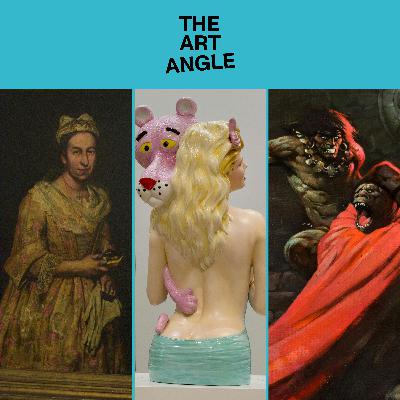
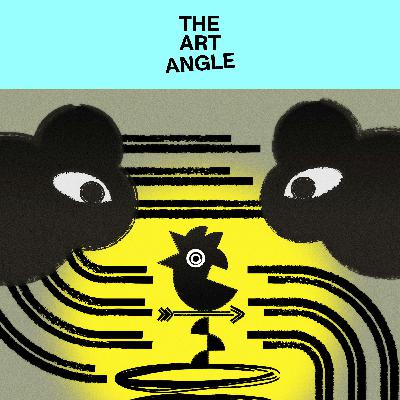
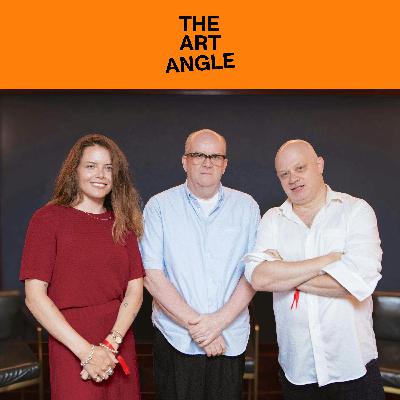

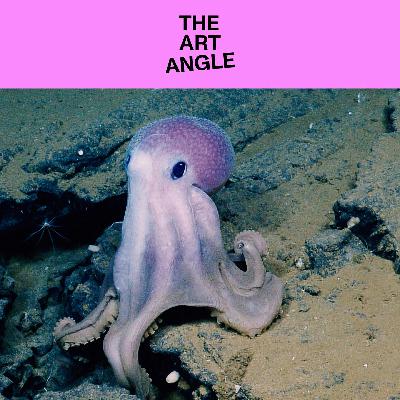
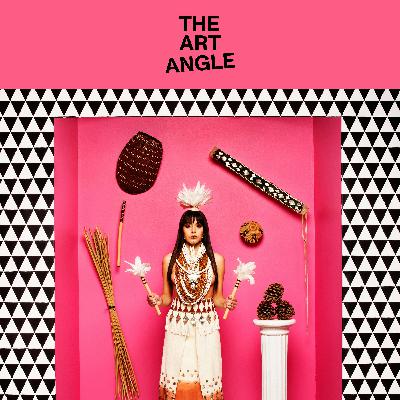
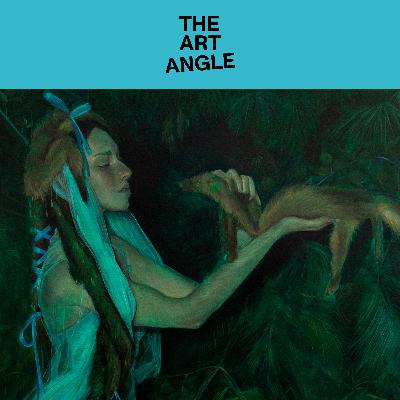
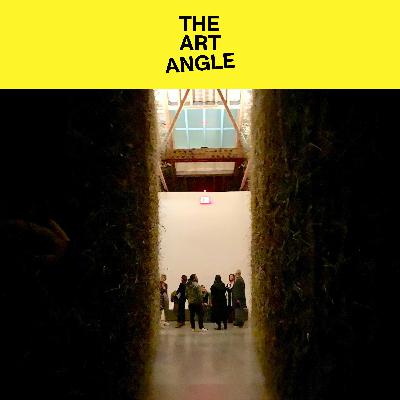
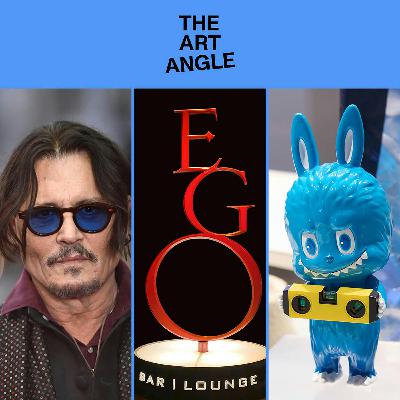
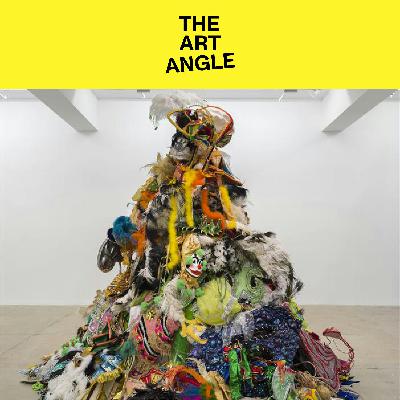
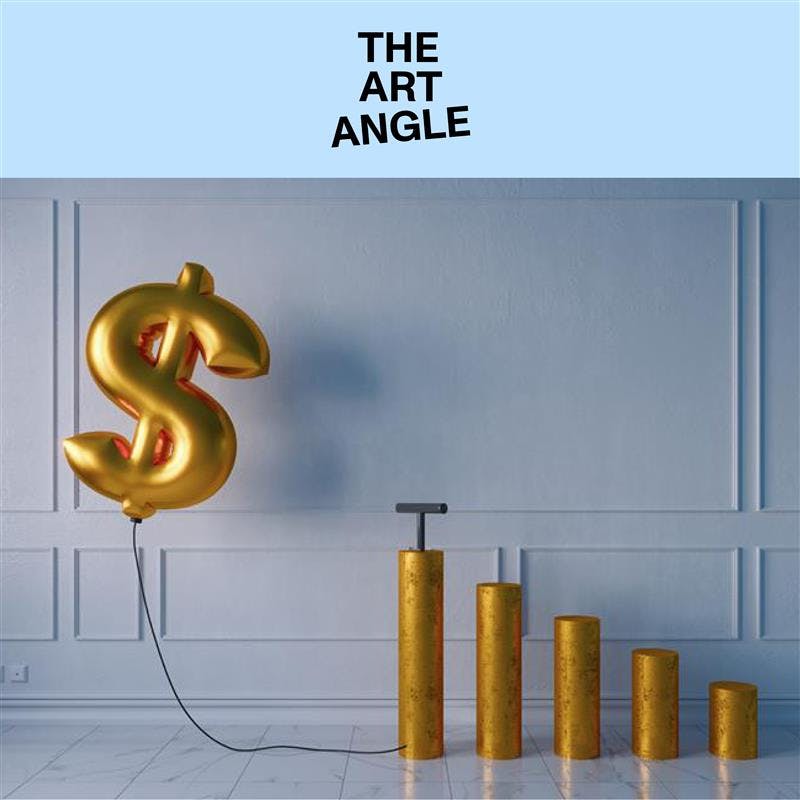
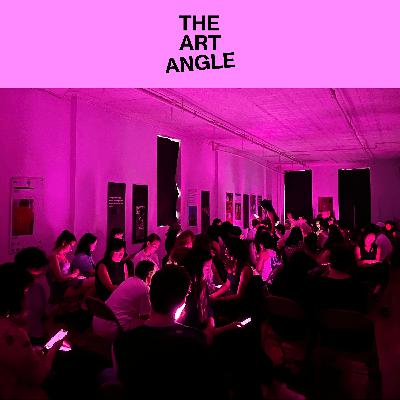

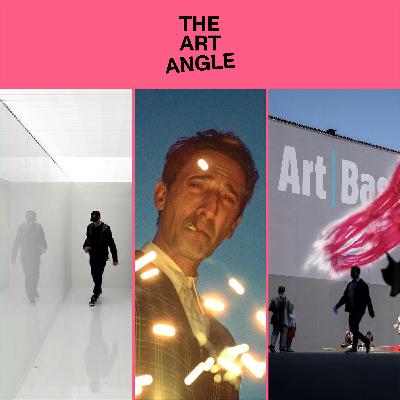
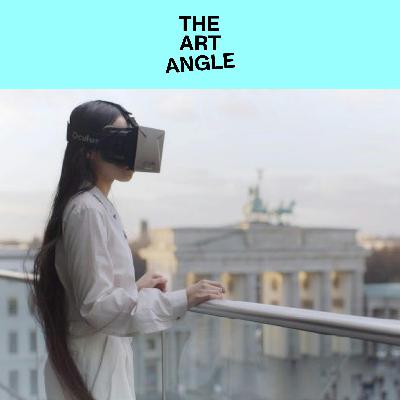



thank you